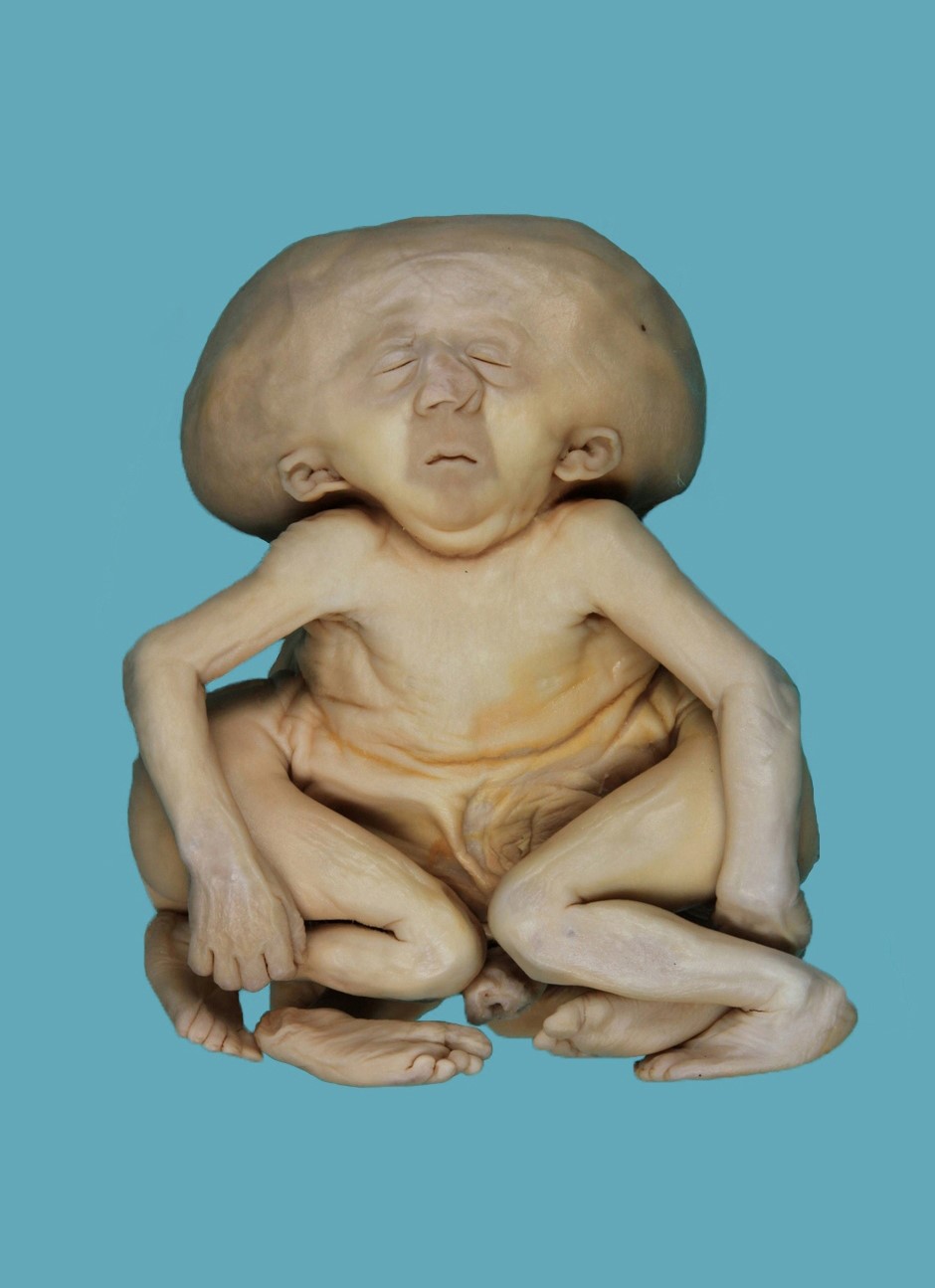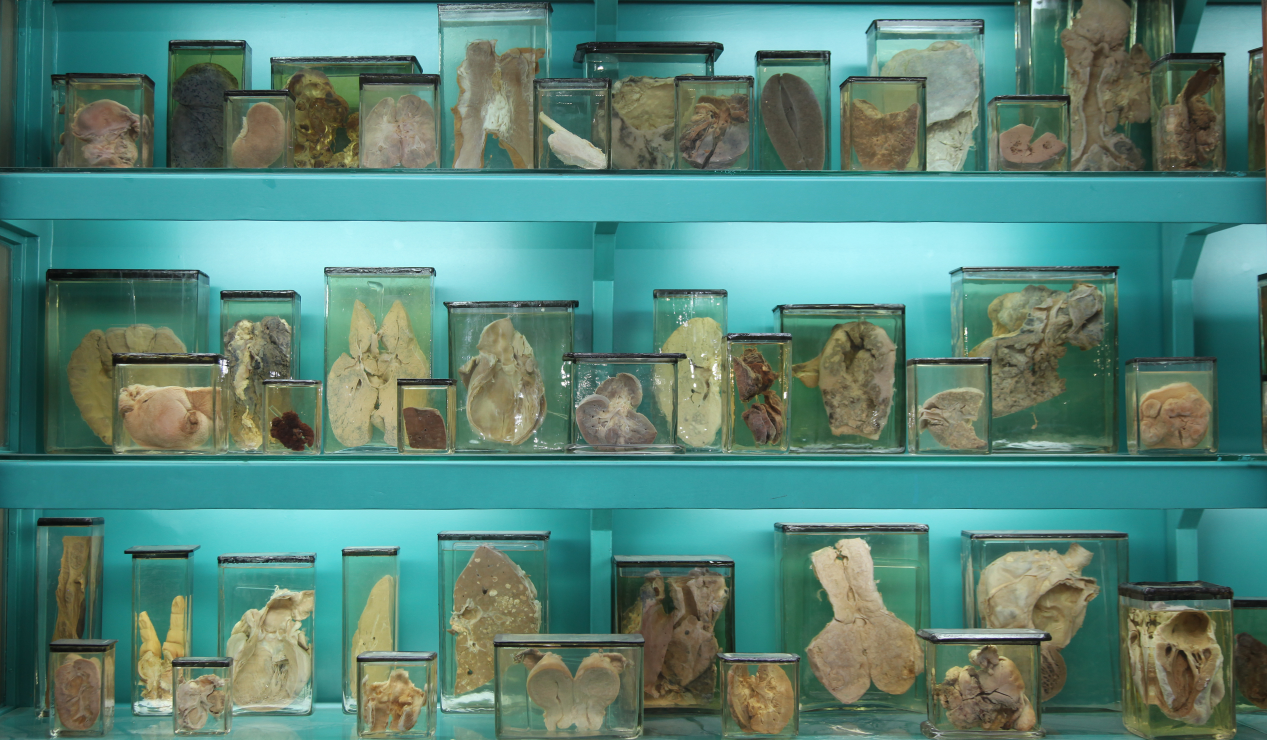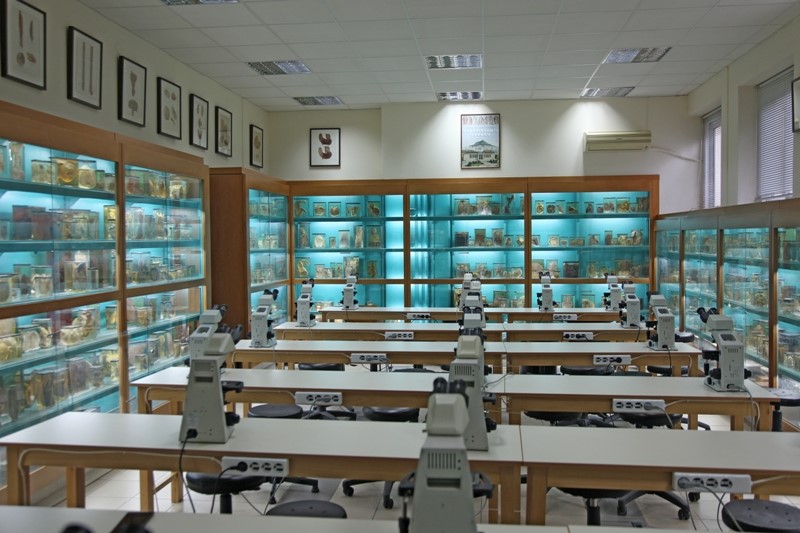Identity
The objectives of the Museum of Pathological Anatomy include: identifying the collections with the corresponding tagging, preserving and conserving of the exhibits, the systematic use of the exhibits in the educational process of undergraduate and graduate students and improving the Museum's ability to welcome more visitors.
History
The Museum of Pathological Anatomy is housed in a specially designed area of the First Laboratory of Pathological Anatomy of the University of Athens Medical School and includes the historic Rokitansky collection, enriched with a large number of histopathological exhibits from the 19th century to the present. The museum collection's history begins in the early 1850s - immediately after the launch of pathological anatomy courses for the students of the Medical School of the newly established "Othonian" University of Athens - and is based on the reports of Professor Demetrios Eleftherios (1905-1994), who served as Professor of Pathological Anatomy from 1954 to 1970. The museum collection started with a small number of preparations donated by the famous Bohemian physician, pathologist, philosopher, and politician, Baron Karl von Rokitansky (1804-1878), who held the Chair of Pathological Anatomy of the University of Vienna at the time. Karl Rokitansky, newly elected Professor in one of the most influential Medical Schools of the time, had already begun the restructuring, enriching, and labeling of the corresponding extensive collection of the Laboratory of Pathological Anatomy Museum of Vienna. The process of Rokitansky's donation to the Othonian University began in 1844, at the request of King Otto's philhellene physician, Bernard Röser. Due to the high transportation cost from Vienna to Athens, almost eight years passed before the national benefactor Baron Simon Sinas, the Greek consul in Vienna, assumed the transportation cost, and the preparations arrived in Athens around 1852.These preparations, plus a few more offered by the "Munich-based" Professor of Anatomy Eugene Schneider, formed the core of the pathologoanatomical collection of the University of Athens Medical School, which quickly led to the establishment of the "Anatomopathological Museum" (1852). Professor Stefanos Stavrinakis (1816-1891) became the Museum's director; he had just returned from Vienna, where he studied on a Greek state scholarship. At the same time, Professor Theodoros Afentoulis, a student of Rokitansky, was the first director of the Medical School's Pathology. During the first years of the University of Athens's establishment, the preparations of the Museum's collection were stored in the central building of the University and were used in the teaching of Pathological Anatomy. In 1871, the Pathology Department and the "Museum" of Pathological Anatomy relocated to a new neighboring building, the current K. Palamas building. In 1932 the Medical School acquired its own space and facilities in Goudi, where all the Laboratories relocated, including the Laboratory of Pathological Anatomy and the "Museum," in a separate building they still occupy today.
Types of audiences
The Pathological Anatomy Museum is addressed to students of the schools of health sciences, undergraduate and graduate students, students of secondary education mainly focused on health sciences, health professionals, researchers of teratogenesis who wish to study the embryological collection, citizens from the general public who, also, want to visit the embryological collection to become informed with the pathological effect of various harmful factors relating to lifestyle and every-day habits (e.g., smoking, alcoholism) or how the body organs affected by various diseases look like.
Collections & Exhibitions
All the exhibits are of particular interest since post-mortem preparations are no longer collected. The preparations preserved in the Museum cover various oncological and non-oncological diseases of organs and systems. Important post-mortem exhibits include lungs with anthracosis, brain with neoplasm, heart with right atrium clot, pericardial mesothelioma, polycystic kidneys, etc. The impressive embryological collection of 100 human embryos with congenital abnormalities and fatal perinatal diseases includes cases of lack of skull-formation/anencephaly, cyclopia, otognathia, genetic skeletal malformations, etc. Also, of particular interest is a rare collection of conjoined twins, including cephalothoracopagus and dicephalous tetrapus twins.
Events & Activities
Events and activities include presenting the exhibits to undergraduate and graduate students of the Medical School, school visits, organizing seminars and training courses for interns, participating in scheduled daily events during which the Athens University Museums welcome citizens and students.
Accessibility
The Pathological Anatomy Museum is located on the ground floor and is accessible to physically challenged people via a concrete "ramp" at the third entrance of Building 10. An additional rearrangement of the area is currently underway to further facilitate the movement of challenged visitors through the museum collection.
Terms of Operation
The Museum is open daily, by appointment.
Director: Anastasia Konstantinidou, Medical School Professor.
Decision of Establishment
Government Gazette 2350 Β ́/16-6-2020








